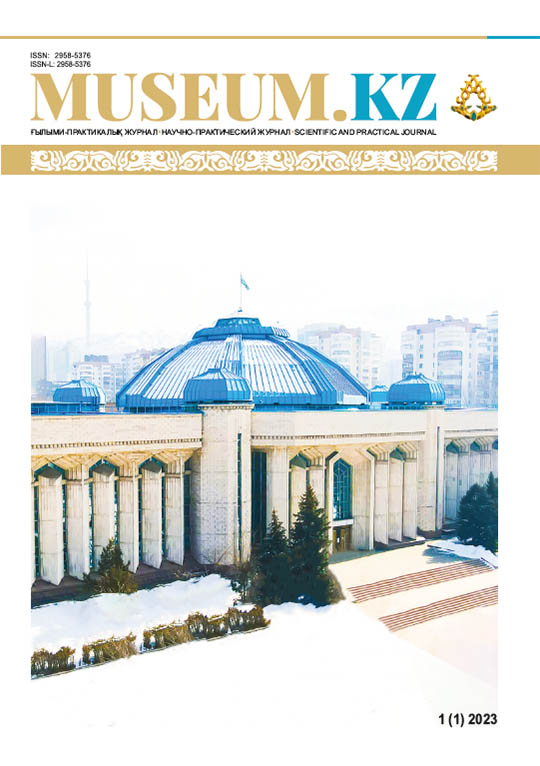SCIENTIFIC RESEARCH WORK OF THE MUSEUM AS THE MAIN DIRECTION OF MUSEUM ACTIVITIES (On a work experience example of the Central State Museum of the Republic of Kazakhstan)
DOI:
https://doi.org/10.59103/muzkz.2023.01.03Abstract
In this article, one of the main directions of museum work - research activities based on its fund collections - considered on the example of the oldest museum both in Kazakhstan and in Central Asia. This is primarily socio-humanitarian research of a source study nature, which focuses on the cameral processing, classification, identification and determination of the documentary properties of museum objects, as well as their scientific cataloguing. The research programs carried out by the museum demonstrate the museum's research activities, both in the development of specialized disciplines and in the popularization of the country's historical and cultural heritage. The focus is on museological case studies, which are intended to form new knowledge in the field of methodology of identification, collection, storage, processing of museum objects, as well as the study of museum collections as an important scientific source base.
Materials and methods: The sources for the article were the materials of the results of several museum scientific-applied researches, based on the stock collections of Kazakhstan museums, which implemented by the staff of the Central State Museum of Kazakhstan within the framework of state tenders on program-targeted financing. Thus, the materials (sources) for the study were works of art and culture, in particular, the watercolor paintings of the first Kazakh professional artist A.Kasteev from the collections of the Central State Museum and other museums of Kazakhstan. The materials in this thematic project were studied as representing historical and ethnographic sources on the traditional culture of the Kazakh people. The materials of the research also include ethnographic objects on Kazakh traditional applied culture in the chronological range covering the end of the XVIII and the beginning of the XX centuries, as well as archaeological collections from the middle ages.
In accordance with the different nature of museum objects, research methods appropriate to the profile of scientific study were used for example, systematization and classification of ethnographic objects from museum collections were applied thematically and problematically, as well as studying objects according to general typological features - typologization, identification, comparison of analogues, historical and cultural, contextual and other scientific methods. Historical-typological and comparative-contrast methods were used to analyze the main categories of archaeological material.







